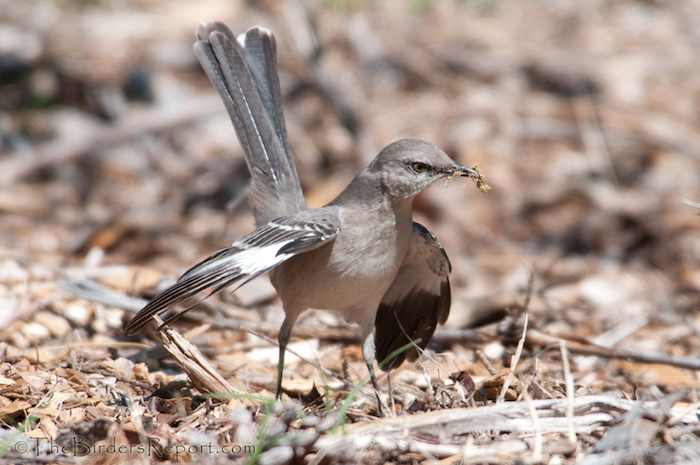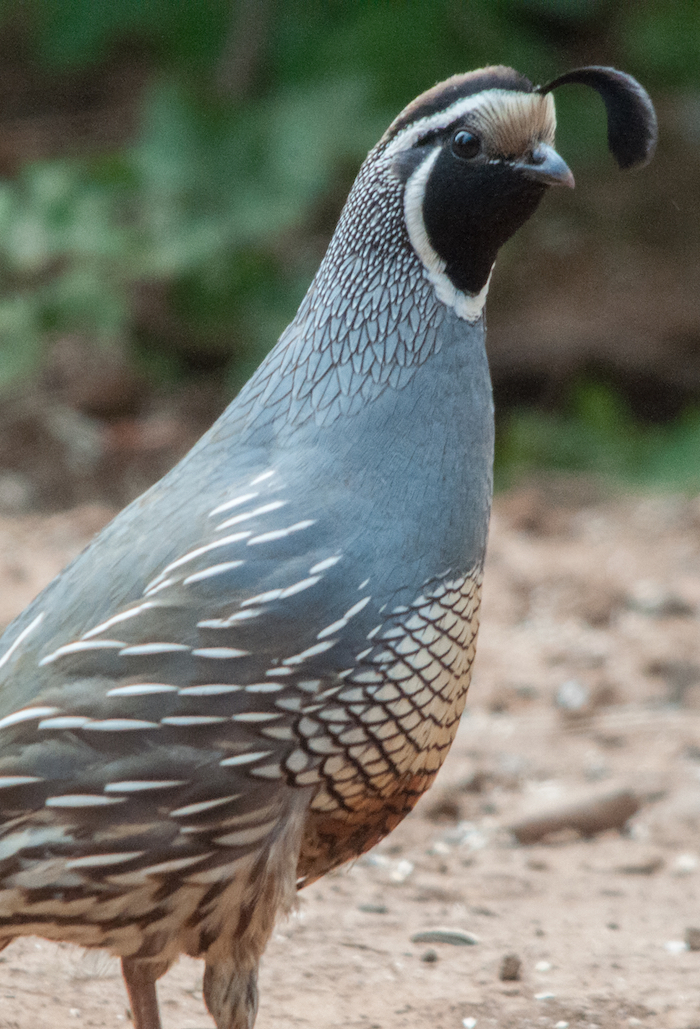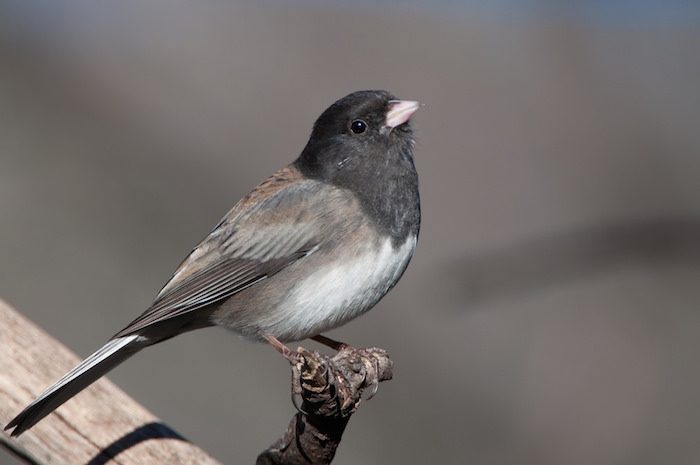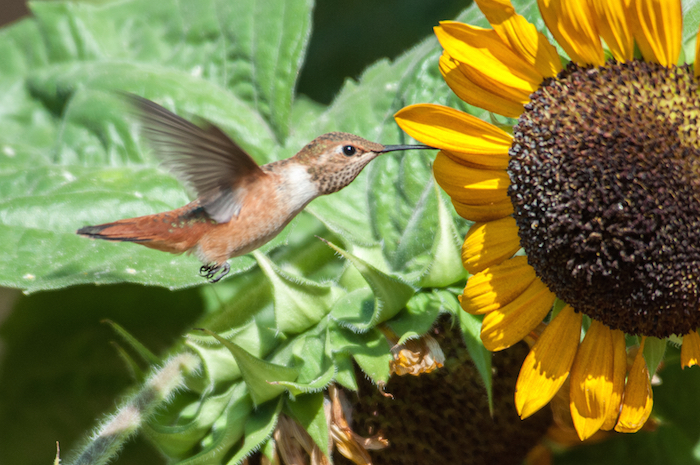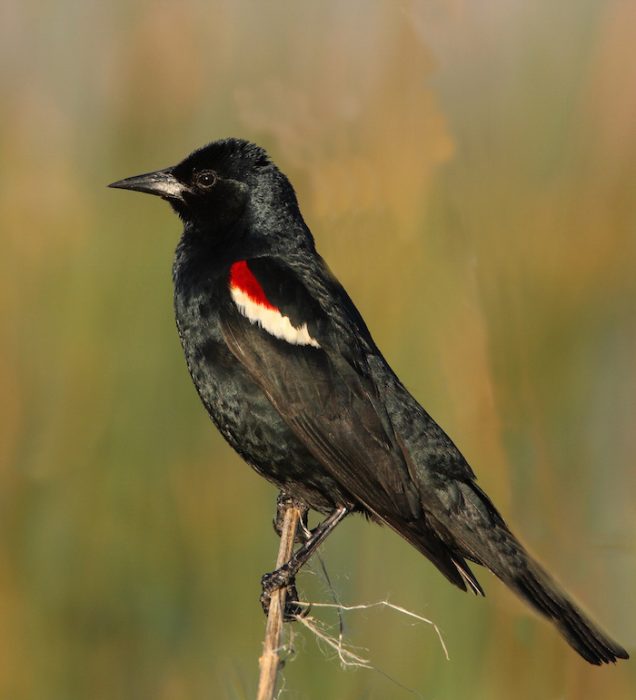
Tricolored Blackbird photo by David Bogener
Last month local birders joined in a state-wide survey of tricolored blackbirds. These birds look much like their more common and widespread relatives, the red-winged blackbirds, and they are even found in similar marshy habitats. But the two speak different languages and have markedly different lifestyles.
These are the sounds of the Red-winged Blackbird:
These are the sounds of the Tricolored Blackbird:
The survey is conducted statewide in just three days. This all-at-once survey approach minimizes recounting the birds as they move. And move they do!
Tricolors begin nesting in early spring in southern California and the San Joaquin Valley. Then they move northward and by late spring and early summer are ready to undertake a second nesting, much of it in the Sacramento River watershed. This year the survey in early April found no tricolored blackbirds in southern Shasta County. Two weeks later the nesters moved in: 10,000+ were reported.
Those birds were descending on a field of Himalayan blackberry. Tricolors have been versatile, and as historical marshes of tules and cattails have gone dry, they have adopted a wide range of nesting vegetation, including nettles, mallows, triticale, and blackberries. When they find a field that looks promising, they swarm into it by the hundreds, thousands, and tens of thousands.
If you visit a local pond this time of year, you are apt to see a sprinkling of red-winged blackbirds perched on the tules, perhaps singing their reedy but musical song and showing off their bright epaulettes, vermillion edged with yellow. Below them are the females, hidden with their brown plumage as they warm their eggs in reed-hung hide-aways.
These red-wing colonies might stretch thirty feet from one perched male to the next. Tricolors, on the other hand, go for high-density. The males are likely perched a mere yard from one another, and there are probably two females on two nests beneath each male. This high-density nesting offers a potential advantage.
While the bright and busy colony, along with the tricolors’ raucous, obnoxious blatting, may draw predators, the sheer number of birds overwhelms most local predators. The nearby cats and snakes can only eat so many nestlings. The vast majority survive.
Unless the killing is mechanized. The flock of over 10,000 that arrived in our county seems huge, but surveys in the 1930’s documented colonies with a quarter to a half million nests! Since then, numbers have steadily tumbled. When triticale replaced tules, tricolors adopted the new fields; farmers reacted to the hungry hordes with poisoned grain and market hunts. Those actions are now outlawed, but, despite many positive farmer-conservationist collaborations, harvesting of grain while birds are still in their nests sometimes continues, wiping out entire reproductive colonies. Most irrevocably, the inexorable conversion of marshes into row crops, orchards, homes, and shopping centers reduces habitat on a wide and lasting scale.
Still, 10,000 birds is enough to make a successful colony. Enough, in fact, to raise the seamy side of reproductive abundance. Tricolors try to nest near plenty of grain and insects, but their numbers can overwhelm not only local predators, but also local food supplies. This creates hunger at home, a problem that different species face differently. Underfed eagle and owl chicks eat their younger siblings. Wolves reduce their offspring by limiting reproduction to one pair in the pack. Observations indicate that tricolored blackbird mothers, rather than starve their whole broods, will remove some chicks to be able to feed the others. It’s not a pleasant reality, but one that successful reproduction can force.

